Story
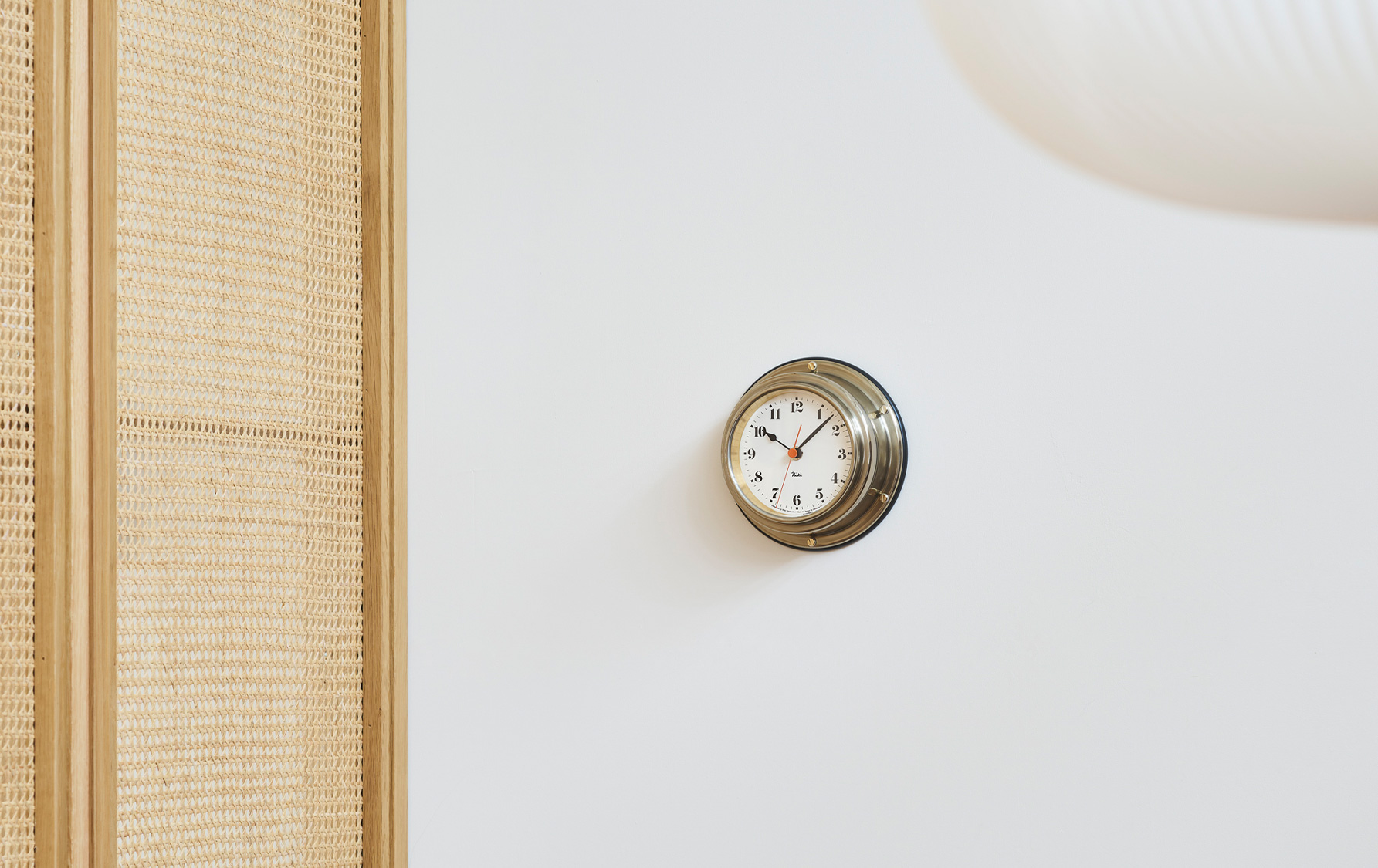
Story Vol.25
Memories of Q Designers and the Birth of the Marine Clock
A quietly dignified appearance. This clock exudes a presence that quietly resonates with Riki Watanabe’s admiration for the sea.
Watanabe’s fondness for distinctive nautical marine clocks led him to collect several of them. We spoke with Akira Yamamoto, who worked closely with Riki at Q Designers, to hear his memories and learn more about how the Marine Clock came to life.
[Text by Akira Yamamoto]
After exiting Yotsuya Station through the Akasaka Gate and crossing Sotobori Street, a short walk along the left side of Shinjuku Street would bring you to a narrow, modern old building made of exposed concrete. On the first floor was a café called Ron, where I would sometimes stop by after lunch. There, I would chat with colleagues from our Q Designers office. I often heard stories about the past, related to our neighbors, such as Mr. Yanagi, and friends like Mr. Kamekura and Mr. Tange. Ron was also home to an original Roman Clock, which later inspired its reissue. Just around the first corner from the café was a liquor store called Suzuden. Its basement housed a standing bar, a perfect spot for a quick drink after work. A little further ahead stood an apartment building. On the eighth floor was Q Designers, the design office led by Riki Watanabe.
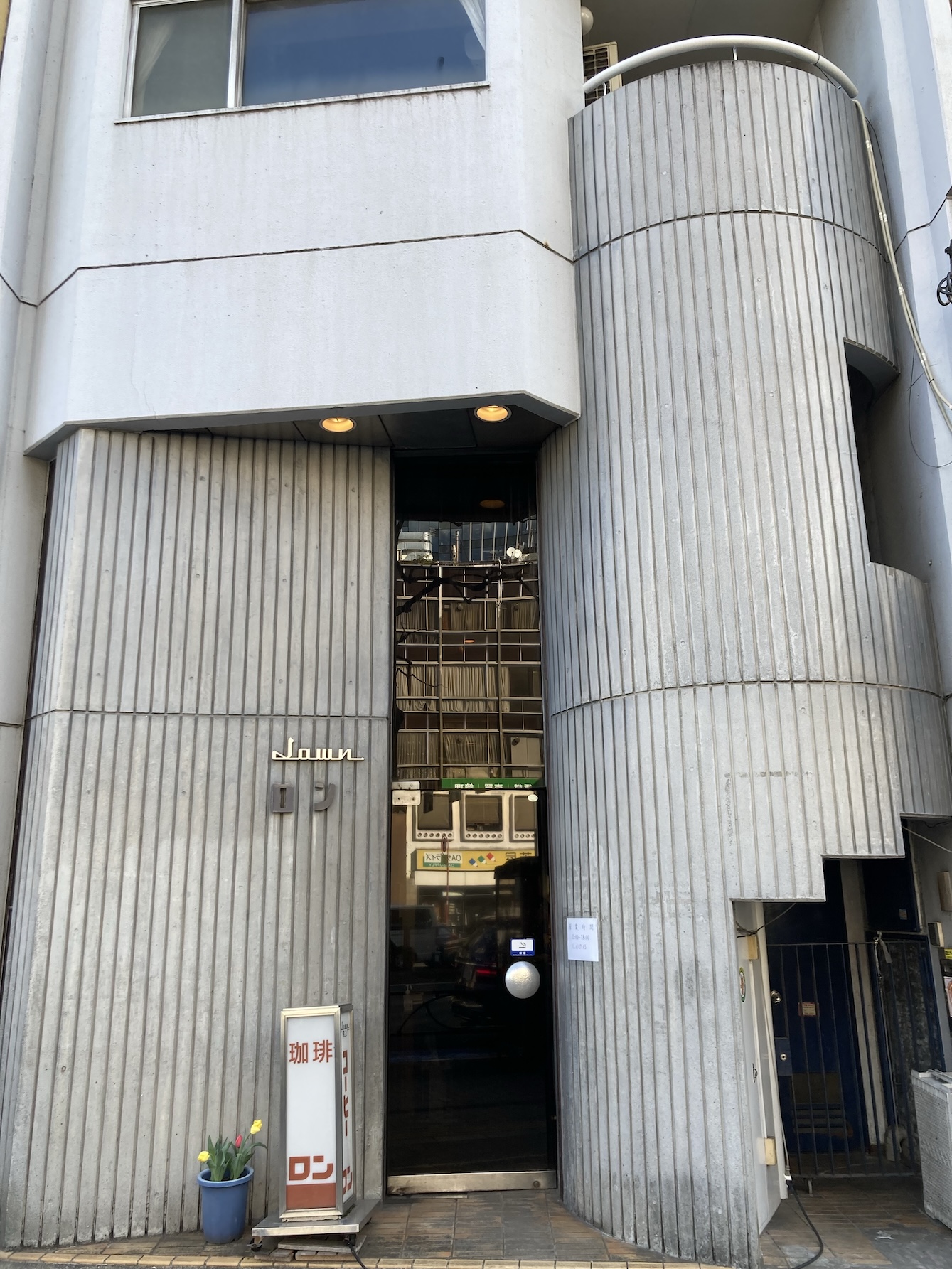
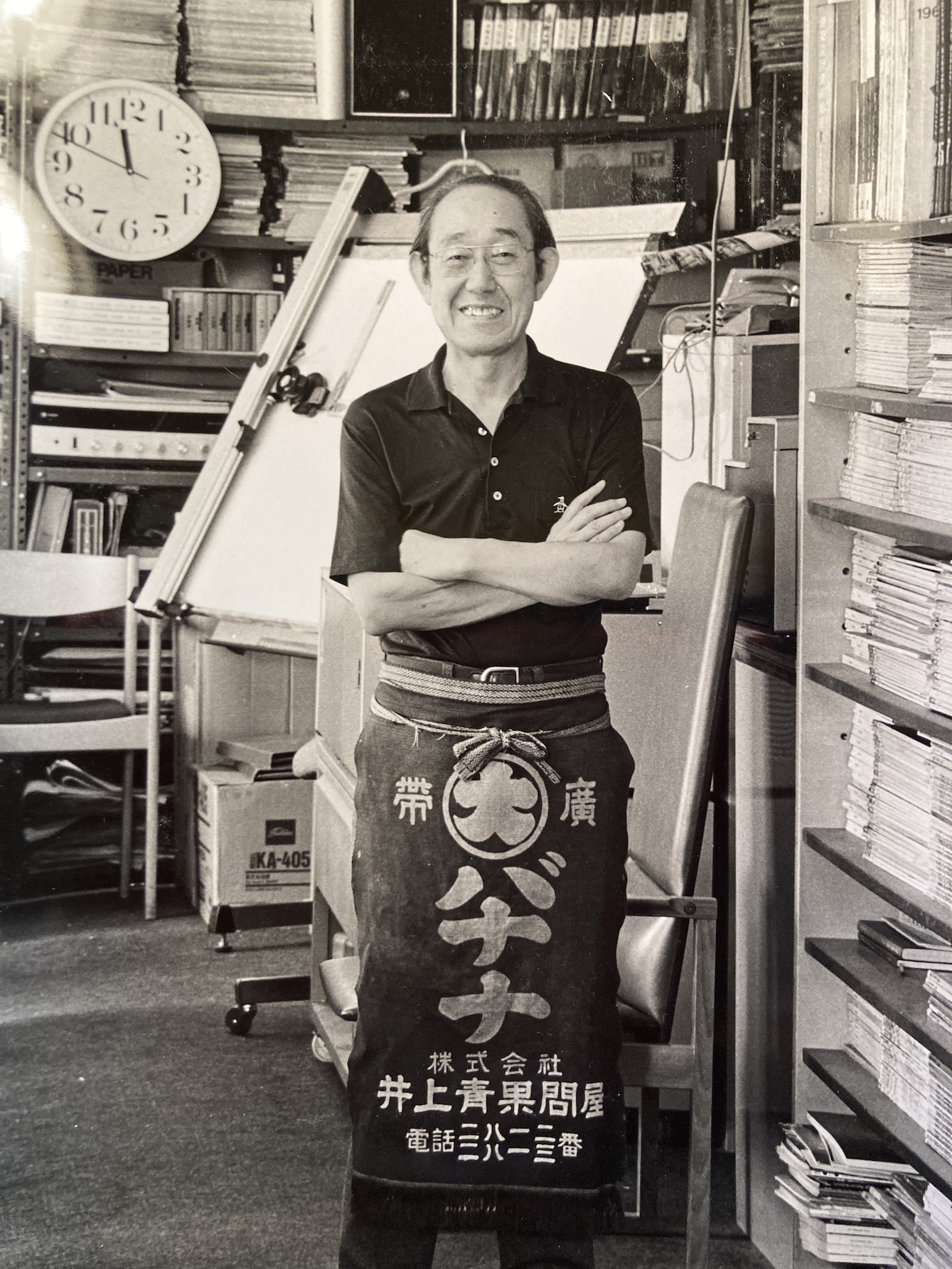
Left: Café Ron, established in 1954. The original Roman Clock displayed here later inspired its reissue.
Right: Riki Watanabe at work in the office. He liked wearing aprons; one of his favorites was from a fruit and veg shop called Shinagawa Seika.
In February 1987, when I first joined the company, my very first task was to create an etched office sign. I had the text typeset, arranged the layout, and prepared the artwork for production. I still remember working on it while being guided by Mr. Mizuno, who was like the office manager. He told me things like, “The ‘Q’ must be in Garamond,” and “Use correction fluid to cover the edges of the pasted type. It might not make much of a difference, but it shows the typesetter that you’re serious about the work, so they’ll take it seriously too.”
At that time, Mr. Watanabe was 76 years old. He looked young, regularly going to a swimming pool near the station. Although he was not very tall, he had a solid build. He absolutely loved swimming. On business trips, he always brought a swimsuit and would swim so far out alone into the ocean or lakes that other people would worry for his safety.
His work covered a wide range, from interior design for Prince Hotels across Japan, to nationwide showrooms and trade fair booths for Hitachi Computer Electronics and INAX. He also handled projects for overseas hotel and airline offices, dental clinics, and even bottle designs for Mizkan. He was so busy that he sometimes had to turn down new requests. We would sometimes reminisce about quieter times when there wasn’t much work, and we got by solely on the manuscript fees that Mr. Watanabe earned.
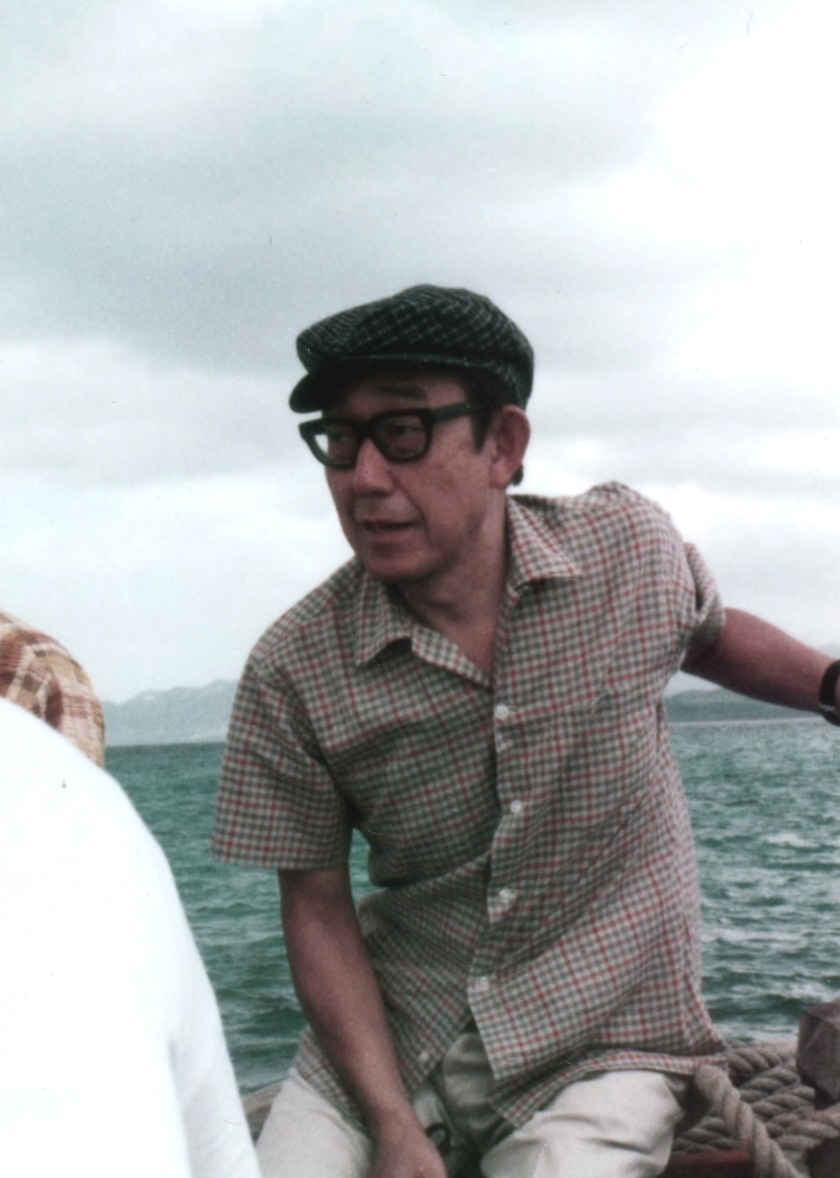 Riki Watanabe on board a ship.
Riki Watanabe on board a ship.
Immediately to the left upon entering was a meeting room, about the size of eight tatami mats. It featured a large, low, oval table by Eames and matching green fabric Eames shell chairs with low armrests. Straight ahead was a wall of windows that faced a middle school playground, with the Akasaka Palace visible beyond. For a city location, the atmosphere was surprisingly calm and serene. To the left along the windows was Mr. Watanabe’s personal workspace. On the right side, extending toward the back of the room, were seven staff tables, each equipped with a slanted drafting board and a drafter. The chairs were also Eames shell chairs with armrests.
To the right of the entrance was the bathroom, where a shower toilet had been installed. At the time, shower toilets were a rarity, but we had one thanks to Mr. Watanabe’s connection with the INAX showrooms. The bathroom was used as a storage room, where roughly 20 boxed Marine Clocks were stacked up. They were likely surplus stock from a discontinued production run, and we would sometimes give them to visitors who came to the office. Looking back, I wish I had taken one too, but at the time, I had no interest in them, which I now regret.
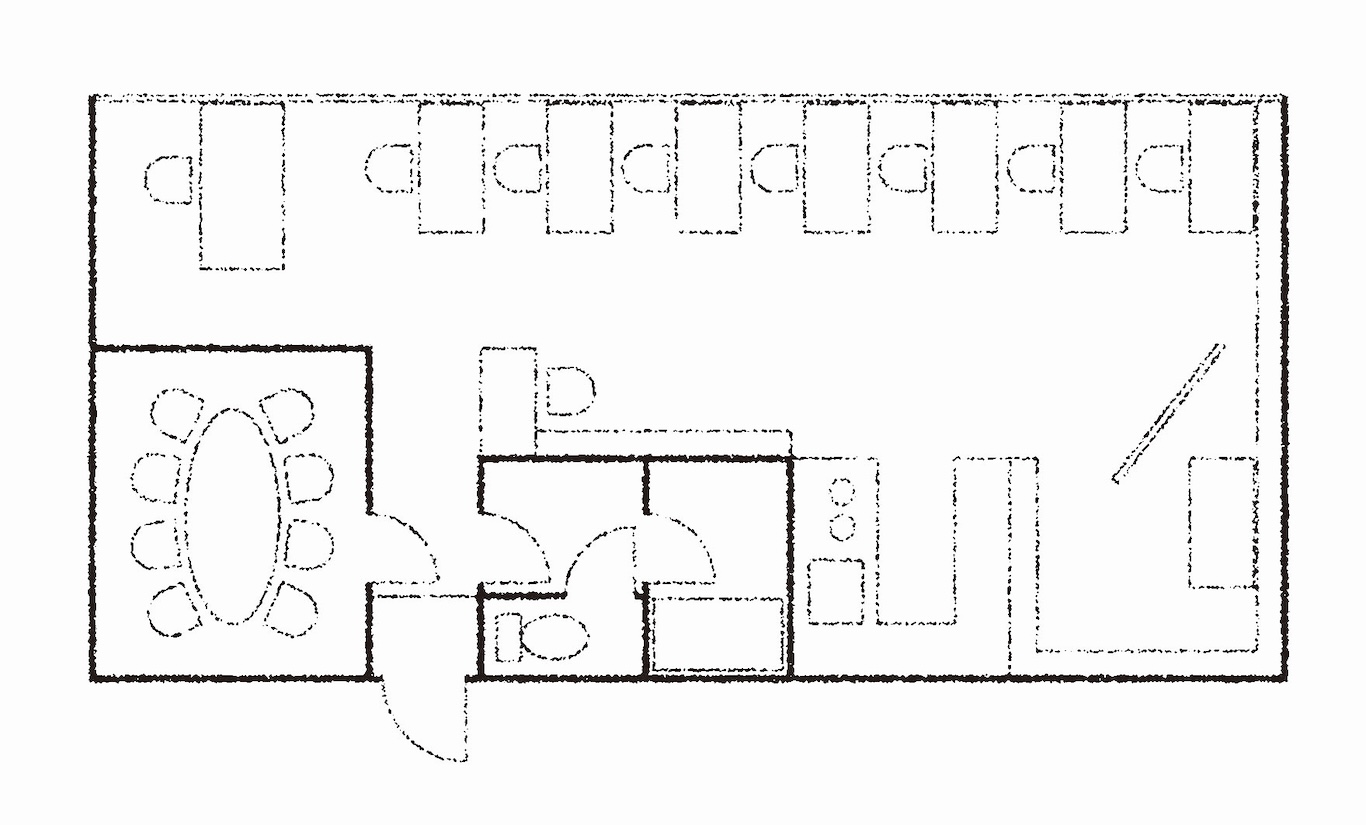
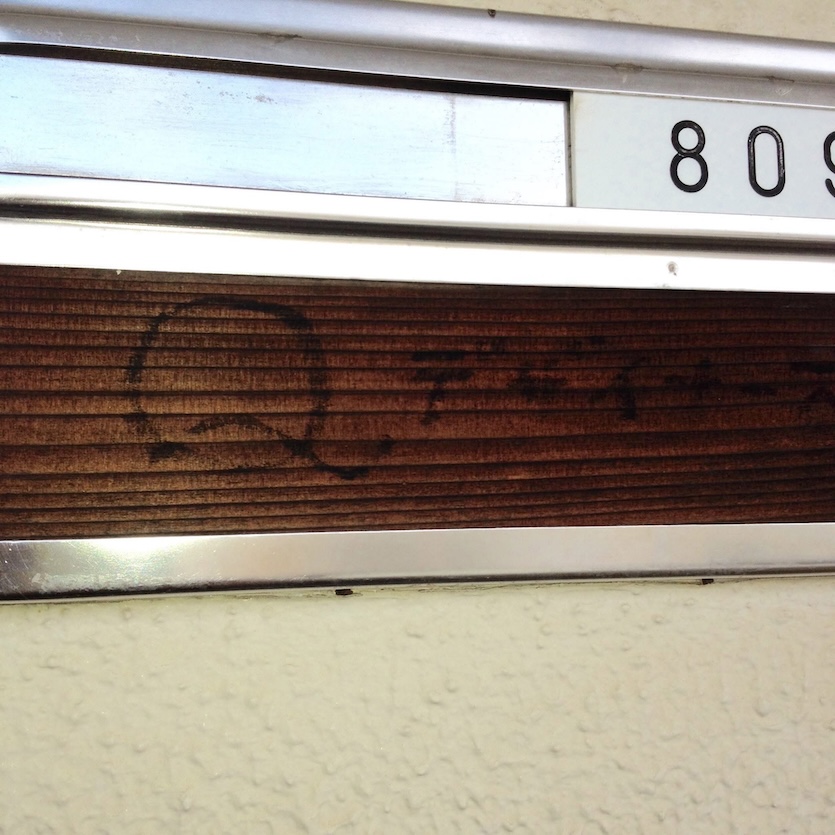
Left: Rough floor plan of the Q Designers office.
Right: Although the building is now home to an architectural design office, the old nameplate still remains. Handwritten in marker on a cedar board, it has a charming, nostalgic character.
As for the birth of the Marine Clock, all we know is that it was a genre Mr. Watanabe loved so much that he wanted to collect them.
Designed in 1979, the Marine Clock, along with the Ring Clock, represents one of Mr. Watanabe’s final works for Hattori Clock Shop (now Seiko). It seems to have been a theme he was particularly eager to pursue, as records show prototypes using a range of frames and dials. Among these, the striking use of a spun copper frame—a material Mr. Watanabe was especially passionate about—stands out prominently.
There is also a story that Mr. Watanabe, who had a close relationship with Charles and Ray Eames, personally gifted a prototype to them during a visit to the United States. Although the prototype held deep personal significance for him, it was never put into production. It is said that the prototype remained on display in the Eames Office for many years thereafter.
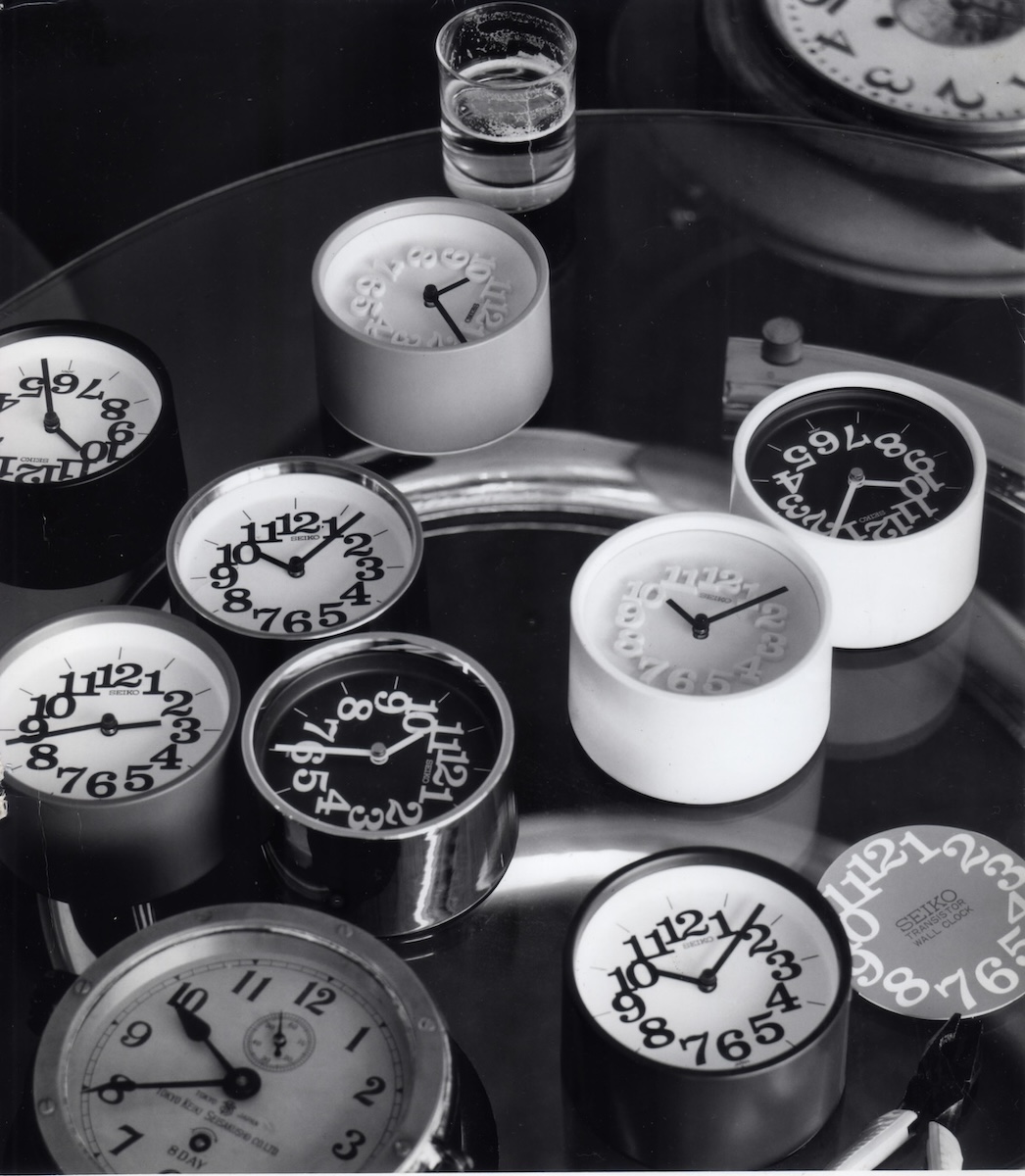
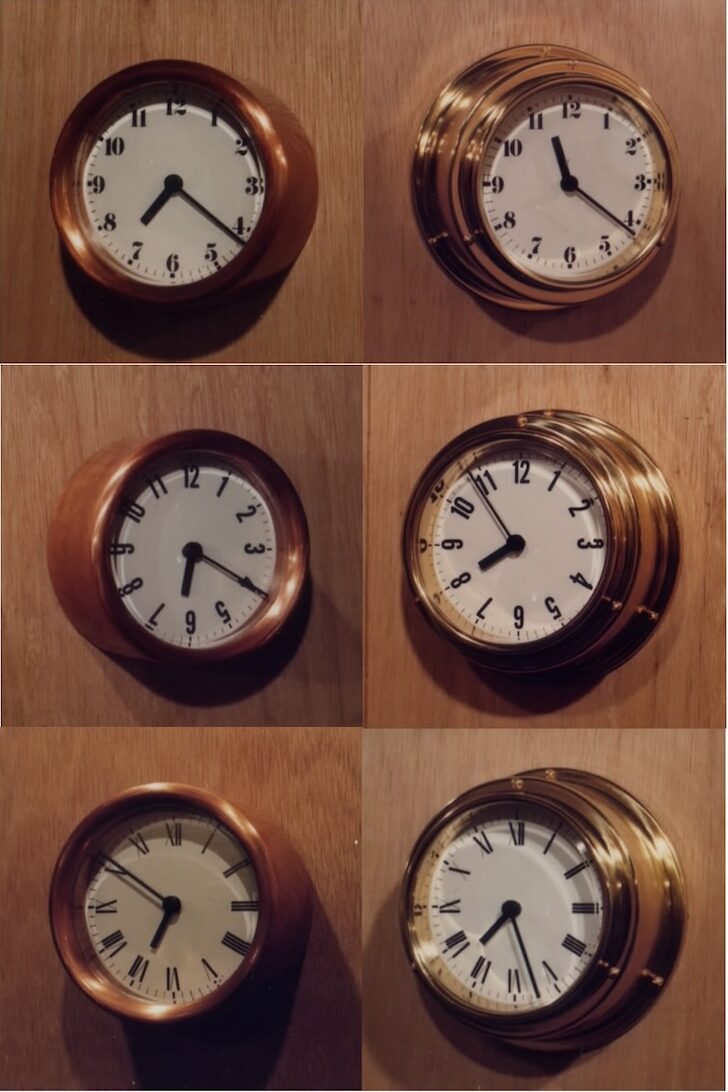
Left: A rare piece from Riki Watanabe’s personal marine clock collection, featured in a still photograph reportedly taken at Shiro Kuramata’s office.
Right: A prototype of the marine clock, featuring a simple copper bezel. A version with radial Arabic numerals was also explored.
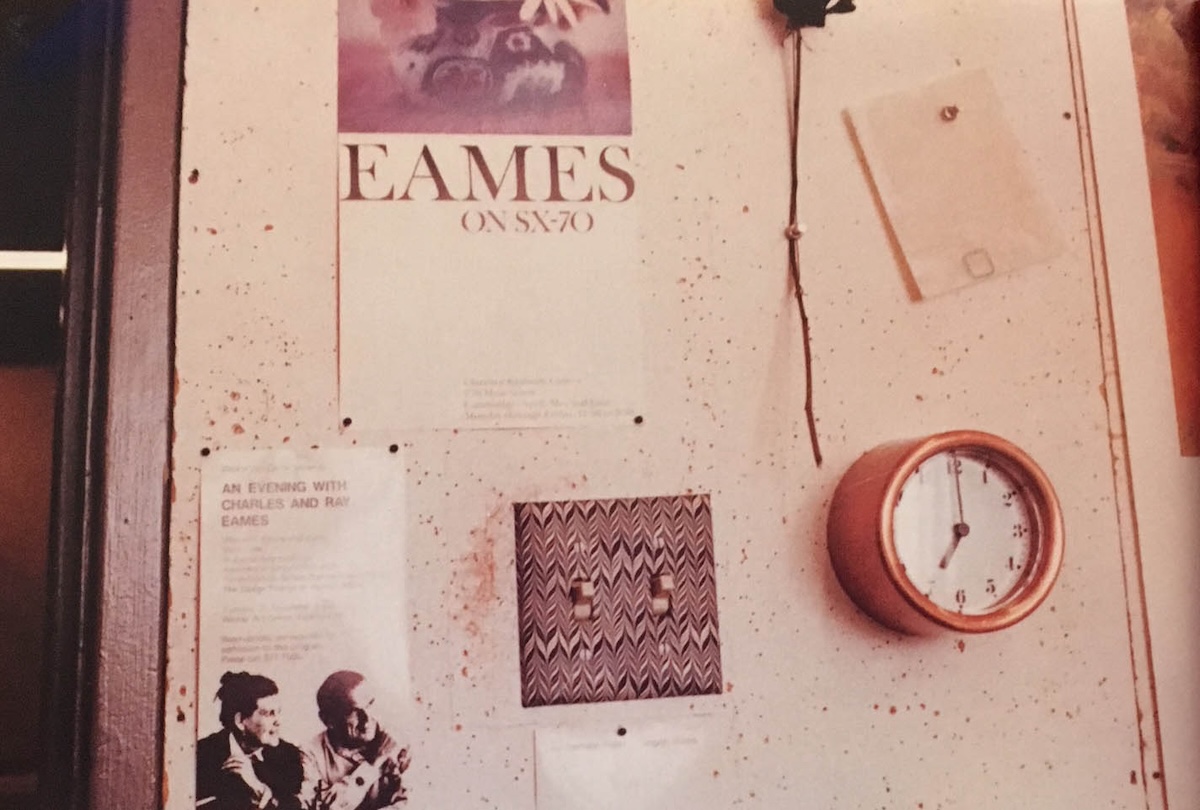
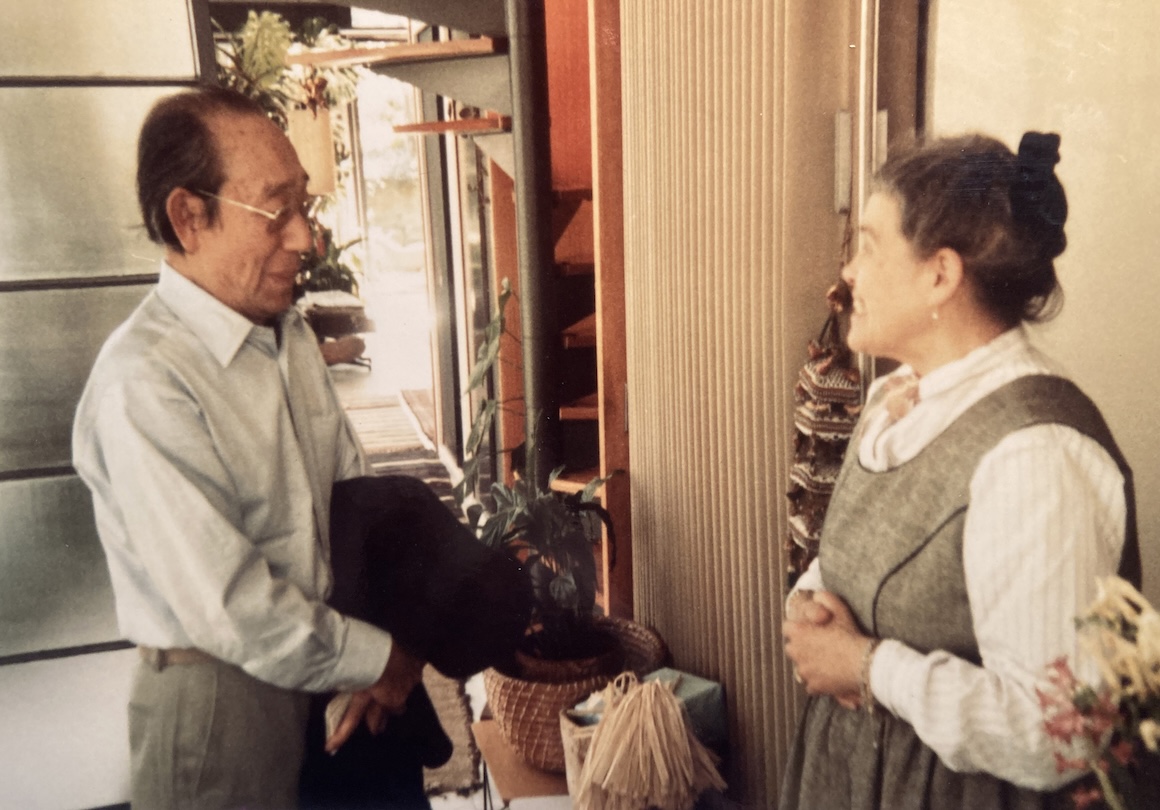
Left: A prototype that was displayed in the Eames Office.
Right: Riki Watanabe with Ray Eames during his visit.
Even before the official revival of the Marine Clock, this prototype was carefully reexamined and reinterpreted using TAKATA Lemnos’s aluminum casting techniques. In 2006, it was released as the Aluminum Clock. While maintaining the same shape, font, and type of hands, the design has been refined to suit contemporary tastes—a fascinating evolution.
Marine design was also a recurring theme in his work with Seiko Watch Corporation. In particular, the commemorative watch released in 2011 for his centennial birth anniversary (limited to 200 pieces) brilliantly distilled the essence of the Marine Clock into a watch design. Some of Watanabe’s spirit continues to be honored today in products still available from Light Up Co., Ltd.
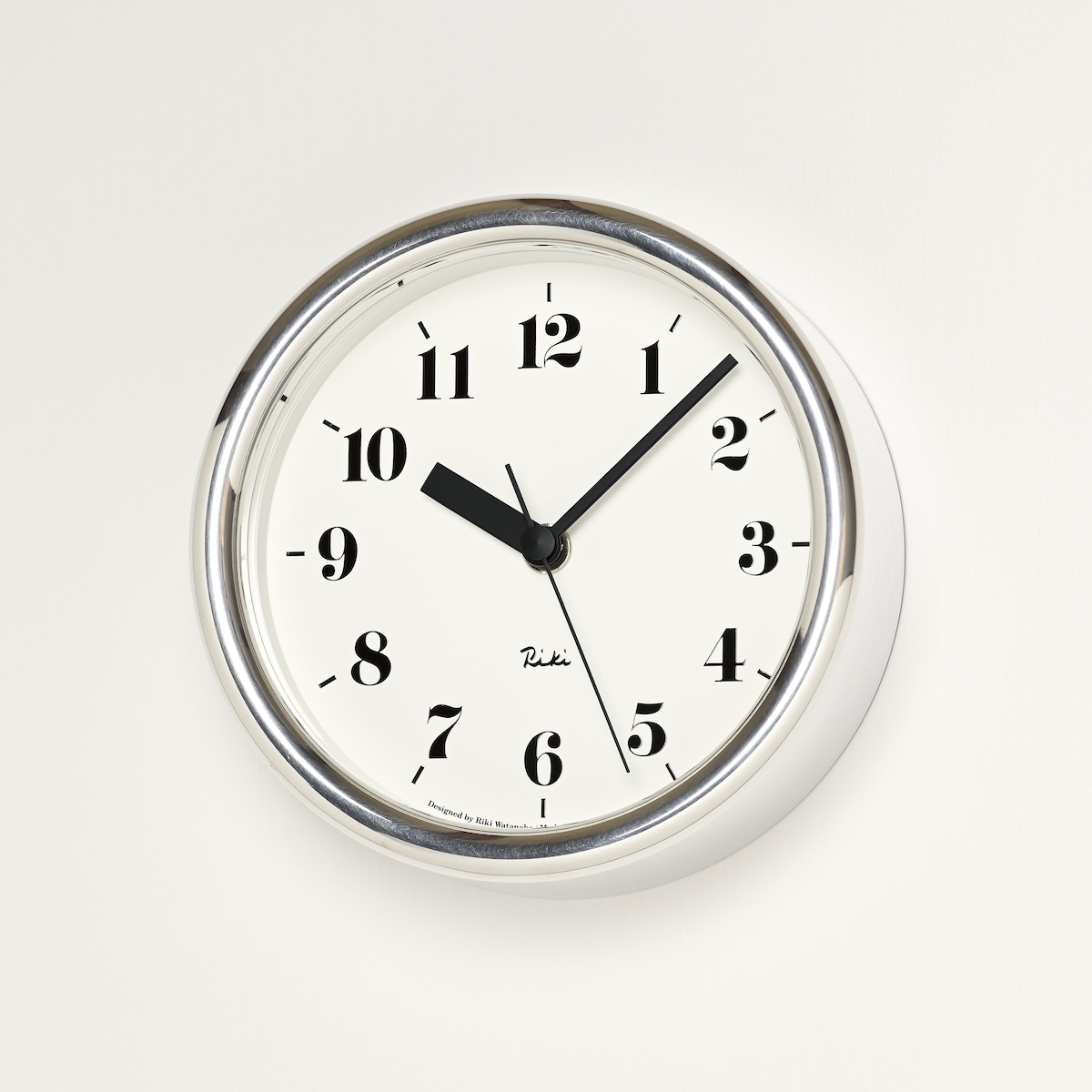
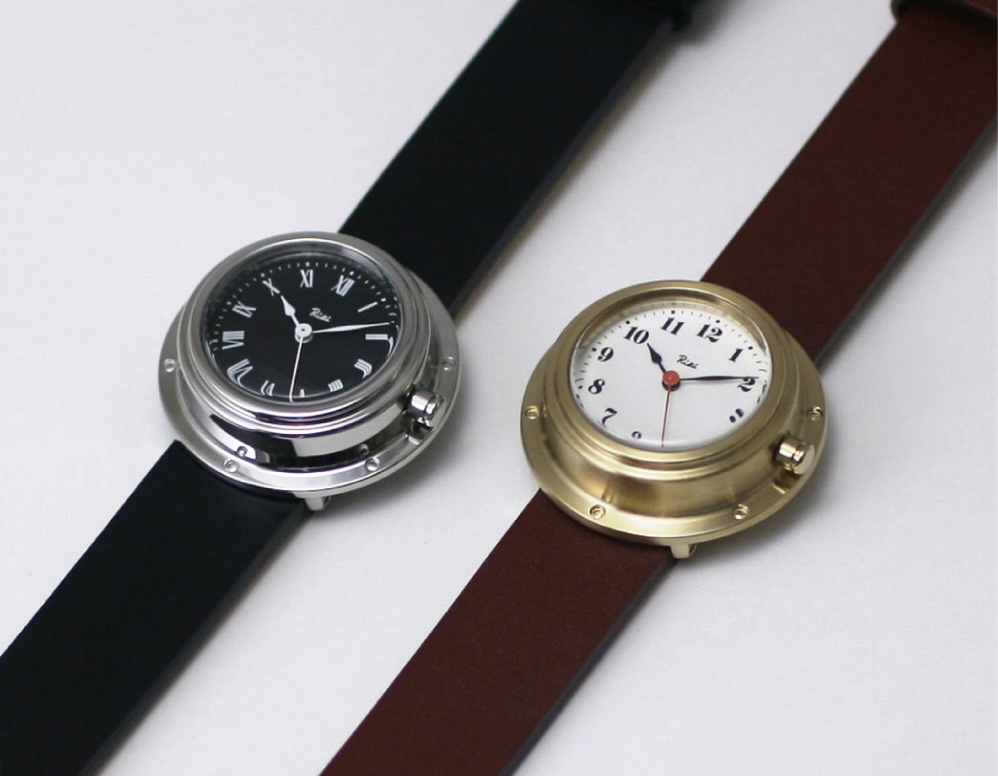
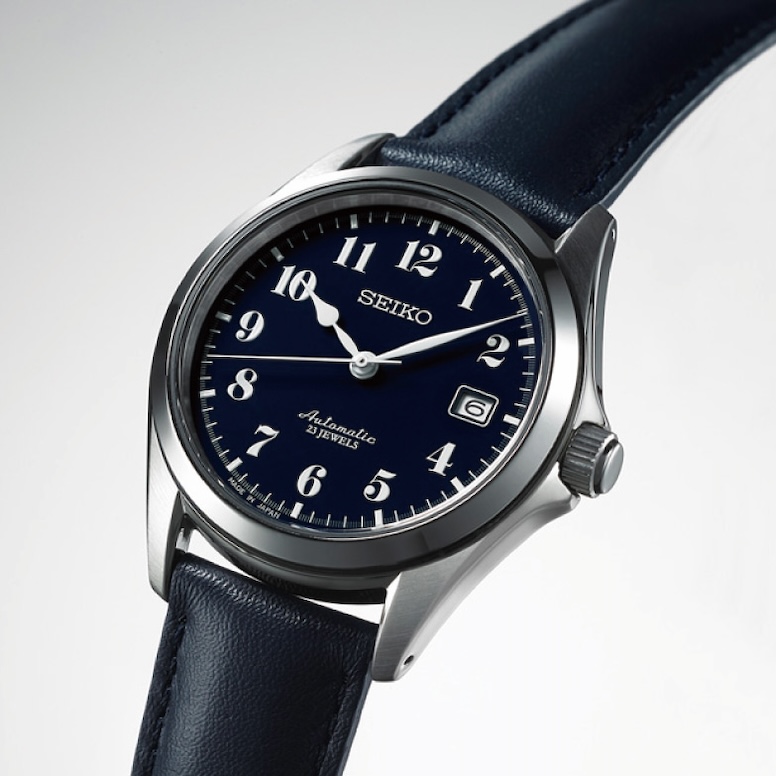
Left: Riki Aluminum Clock
Center: Centennial commemorative watches released in 2011 (200 pieces each, Seiko Watch Corporation)
Right: An automatic watch jointly developed with Seiko Watch and sold by Light Up Shopping Club Co., Ltd.
In his 1976 essay “Designer’s Journey,” Riki Watanabe reminisced about seaside memories from his youth in Shinagawa and Yokohama, as well as the ocean scenes from his overseas business trips to Greece and Mexico, and his vacations in Okinawa and Bali. Perhaps the reason the Marine Clock feels different from other timepieces lies in Watanabe’s deep emotional connection to the sea and nostalgia that infuses it.
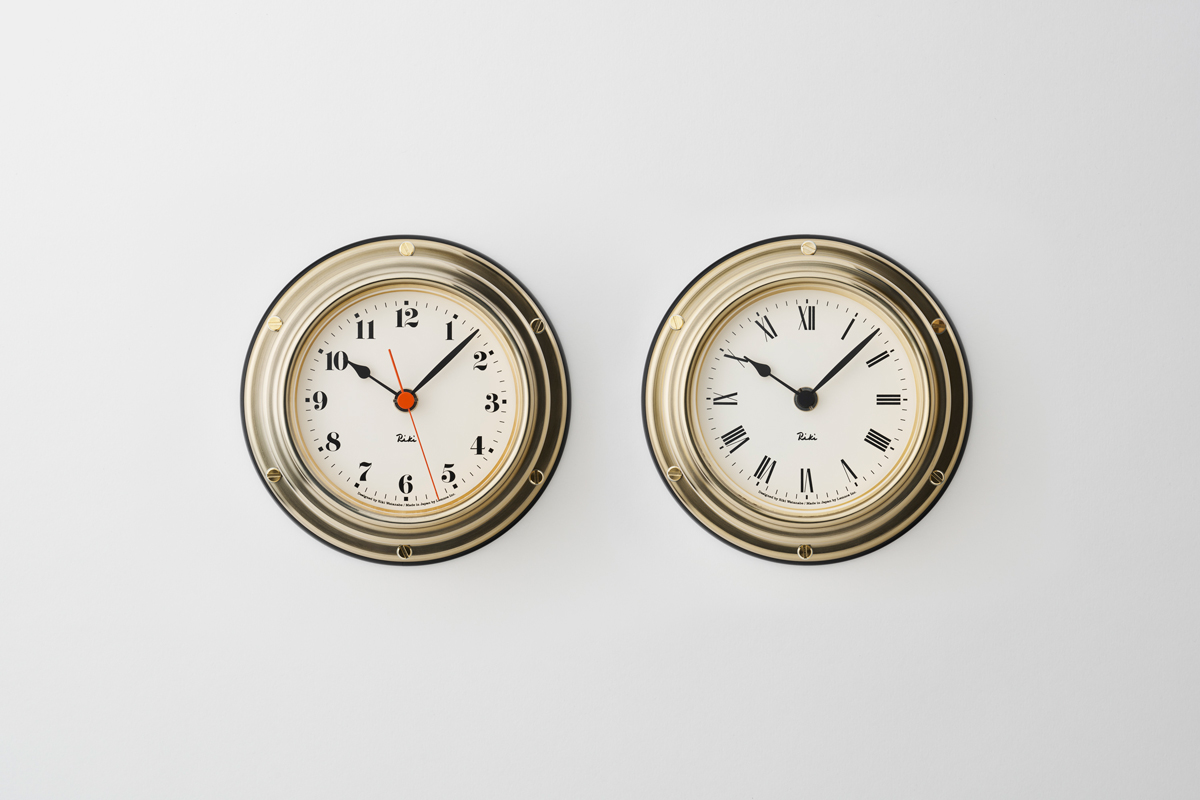
RIKI MARINE CLOCK(WR24-01,WR24-02)
A poised and dignified presence. This clock quietly resonates with the designer’s longing for the ocean. Originally designed in 1979 for interior use, it represents Watanabe’s personal interpretation of the marine clock—a genre originally crafted for ships and admired for its distinctive character. Watanabe, who held a deep affection for marine clocks, collected several over time.
The clock features a subtly gleaming deep-drawn stainless-steel frame that highlights tiered structural detailing, a milled aluminum chapter ring, original brass decorative screws, and a beveled acrylic crystal. This piece combines classical elegance with modern refinement down to the finest details.
Watanabe carefully selected Didoni-style Arabic numerals and created multiple prototypes in pursuit of the ideal balance between the frame’s shape and materials. Two versions were developed: one featuring Arabic numerals and a sweeping second hand that captures the essence of a marine clock, and another with Roman numerals and no second hand, offering a more serene and refined aesthetic.
To product page
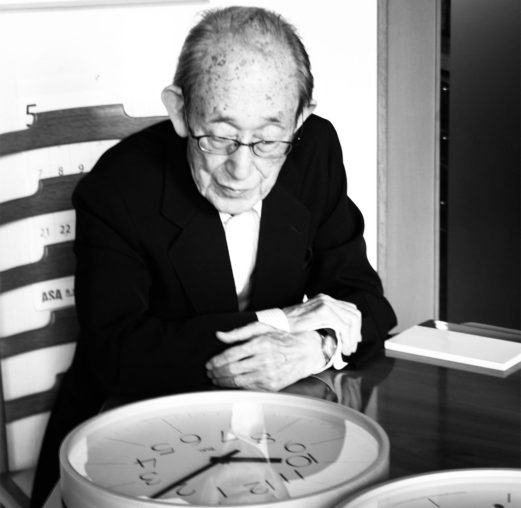
Riki Watanabe
(1911–2013) Graduated from the Woodwork Department of Tokyo High Polytechnic School. After working as an assistant professor at Tokyo High Polytechnic School and as an assistant in the Forestry Department at Tokyo Imperial University (the existing Tokyo University), he established Japan’s first design office, the RIKI WATANABE Design Office, in 1949. His main focus was the establishment of the Interior Architect Department at Tokyo Molding University, Craft Center Japan, Japan Industrial Designer Association and Japan Designers Committee. He designed the interior decor at the Keio Plaza Hotel, Prince Hotel, etc. and furniture such as the “Himo-Isu (Rope chair)” and “Trii-stool”. Moreover, from wall clocks and watches to a public clock called “Hibiya pole clock” at Dai-ichi Life Holdings in Hibiya district, his work on clocks and watches became his lifework. He received the Milano Triennale Gold Medal in 1957, the Mainichi Industrial Design Prize, Shiju hosho(the Medal of Honor with Purple Ribbon), and many other awards/recognitions. In 2006, the “Riki Watanabe – Innovation of Living Design” exhibition was held at the National Museum of Modern Art.